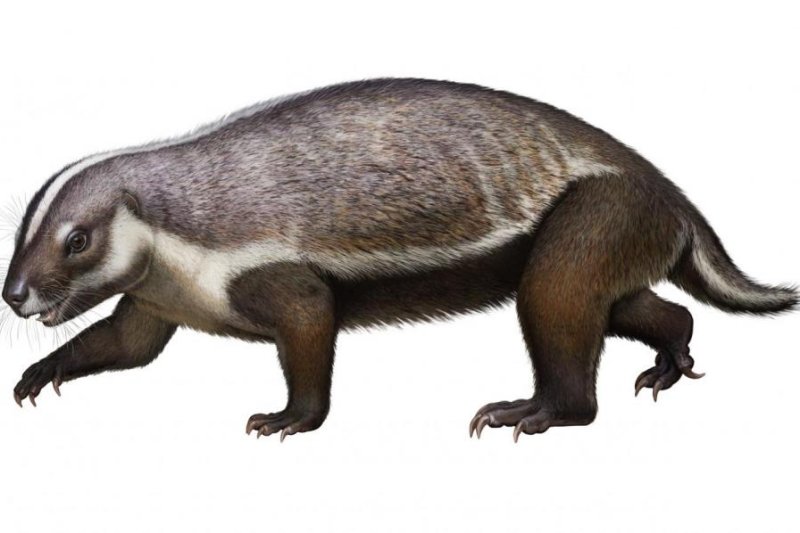The 66-million-year-old mammal species Adalatherium featured a strange combination of anatomical features. Illustration courtesy of Andrey Atuchin
Dec. 18 (UPI) -- The newly published discovery of a "giant" mouse relative that lived alongside the dinosaurs some 66 million years ago suggests that many of Earth's earliest mammals were strange creatures.
The origins of storied animal lineages sometimes are described as evolutionary experiments. These primitive species often feature odd combinations of attributes not seen among their modern descendants.
Adalatherium, which translates from the Malagasy and Greek languages as "crazy beast," was one such experiment.
Described for the first time in a paper published Friday in the Journal of Vertebrate Paleontology, the crazy beast looks superficially like a badger, but 20 years of investigation revealed under the skin a collection of physiological traits never seen before.
The giant mouse hosted an unusually long trunk vertebrae, and while its hind legs were splayed wide like those of a crocodile, its forelimbs were tucked under its body.
The front teeth looked like a rabbit's, but its back teeth were truly novel, unlike those of any known mammal species, ancient or modern. Weirder still, the top of the crazy beast's snout was marked by a large hole -- a feature for which scientists have no explanation.
"Knowing what we know about the skeletal anatomy of all living and extinct mammals, it is difficult to imagine that a mammal like Adalatherium could have evolved; it bends and even breaks a lot of rules," study lead author David Krause, senior curator of vertebrate paleontology at the Denver Museum of Nature and Science, said in a news release.
The crazy beast's exquisitely preserved remains were recovered 20 years ago in Madagascar. Though it took researchers that long to describe the species' strange attributes, the bones have offered scientists fresh insights into early mammalian evolution in Gondwana, the supercontinent that yielded Africa, South America, Australia, Antarctica, the Indian subcontinent and the Arabian Peninsula.
"Adalatherium is an important piece in a very large puzzle on early mammalian evolution in the Southern Hemisphere, one in which most of the other pieces are still missing," said study co-author Simone Hoffmann, professor of paleobiology at New York Institute of Technology.
According to Krause, if paleontologists had found only a partial skeleton, it's unlikely they would have been able to identify the strange mammal.
"Adalatherium is simply odd," he said. "Trying to figure out how it moved, for instance, was challenging because its front end is telling us a completely different story than its back end."
The long vertebrate and oddly positioned feed suggest the giant mouse adopted a kind of hybrid posture, halfway between ancient reptiles and modern mammals. The species' forelimbs and its rabbit-like front teeth suggest the mouse relative was a digger and an herbivore.
Though the crazy beast's evolutionary roots are linked with Gondwana, what's now Madagascar had actually separated from the supercontinent by the time the Adalatherium specimen perished and became preserved.
"Islands are the stuff of weirdness, and there was therefore ample time for Adalatherium to develop its many extraordinarily peculiar features in isolation," Krause said.















